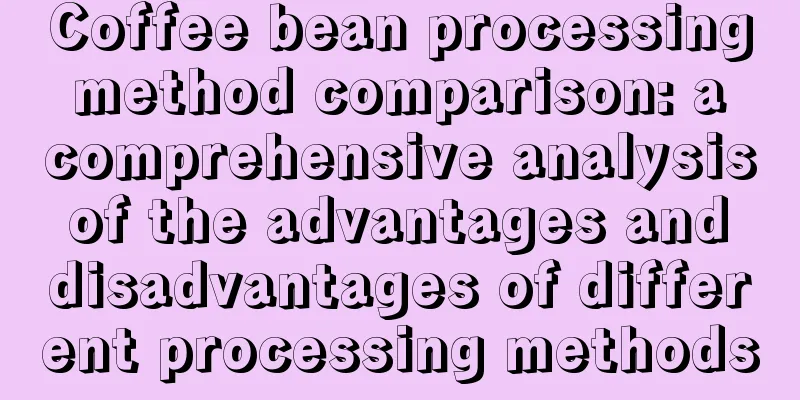Coffee bean processing method comparison: a comprehensive analysis of the advantages and disadvantages of different processing methods

introductionCoffee is one of the most popular drinks in the world, and the processing method of coffee beans has an important impact on the taste and flavor of coffee. The current mainstream coffee bean processing methods include dry method, wet method and semi-dry method. This article will comprehensively analyze the advantages and disadvantages of these three different processing methods, and provide readers with a better understanding of the principles and characteristics behind each method. Dry processingDry processing is the most traditional and simplest method of processing. In this process, the coffee cherries that are more mature and have changed color in the outer skin are spread out in the sun for several weeks to remove moisture, and then the outer skin is peeled off by mechanical equipment. advantage:
shortcoming:
Wet ProcessingWet processing is a relatively new and more complex process in which the coffee cherries are soaked in water to remove the outer skin and pulp, and the mucilage adhering to the beans is removed through a fermentation process. advantage:
shortcoming:
Semi-dry processingSemi-dry processing is a method that combines the characteristics of dry and wet processing. In this process, the coffee cherries are first mechanically removed from the outer skin before being soaked and fermented. advantage:
shortcoming:
in conclusionDifferent coffee bean processing methods have their own advantages and disadvantages. Choosing the right processing method depends on many factors, including geographical conditions, water availability, cost, and target taste. Dry processing retains the original flavor and is suitable for water-scarce areas; wet processing provides higher cleanliness and flavor diversity, but consumes a lot of water resources; semi-dry processing is a compromise between the two methods. No matter which method you choose, the key is to master the corresponding technology and adjust and improve it according to actual conditions. It is hoped that through this comprehensive analysis of the advantages and disadvantages of different coffee bean processing methods, readers will be able to better understand the principles and characteristics behind each method and make wise choices in actual production. |
<<: Coffee bean storage method: preservation tips and precautions
>>: Deep roasted coffee beans: a journey of rich aroma
Recommend
Tips for making coffee bean cookies: Let your taste buds immerse in the unique charm of fragrant coffee!
Coffee bean biscuits are a delicious snack that a...
Fully automatic coffee machine, the working principle and operation process behind the magic
Fully automatic coffee machines use high-tech aut...
Does drinking coffee affect sperm quality in men?
The effect of coffee drinking on sperm quality in...
The charm of coffee, the artistic feeling of savoring life
The charm of coffee is not only a drink, but also...
Coffee beans: small black beads, the source of mellow aroma
Coffee beans: small black beads, the source of me...
Simple coffee machine tutorial, easy to master operating skills
This article introduces the tutorial of using a s...
Coffee Varieties: Learn about the Charm and Flavor of Coffee
The charm and flavor of coffee Coffee is a popula...
「Coffee Knowledge」The Origin of the Name of Cappuccino and How to Taste It
Follow Cafe Review (WeChat public account vdailyco...
Thailand Victory Coffee, the Secret Ingredient Revealed
Thai Victory Coffee has attracted much attention ...
Analysis of the effects of coffee, in-depth exploration of the time effect and influencing factors of coffee's refreshing effect
Coffee is a widely popular drink, and its refresh...
How to make a good cup of coffee with a filter? Here is a practical guide
Hello everyone, I am Global Food. Today's food...
Coffee machine, a dual exploration of convenience and experience
The coffee machine combines the dual advantages o...
Starbucks coffee beans have a shelf life of 8 months
Why the shelf life of coffee beans is crucial to ...
History of coffee latte art, classification of coffee latte art
The coffee we drink every day, whether it is made ...
Uncover the story behind the price of Starbucks latte, economic analysis from planting to cup
This article explores the economics behind the pr...









